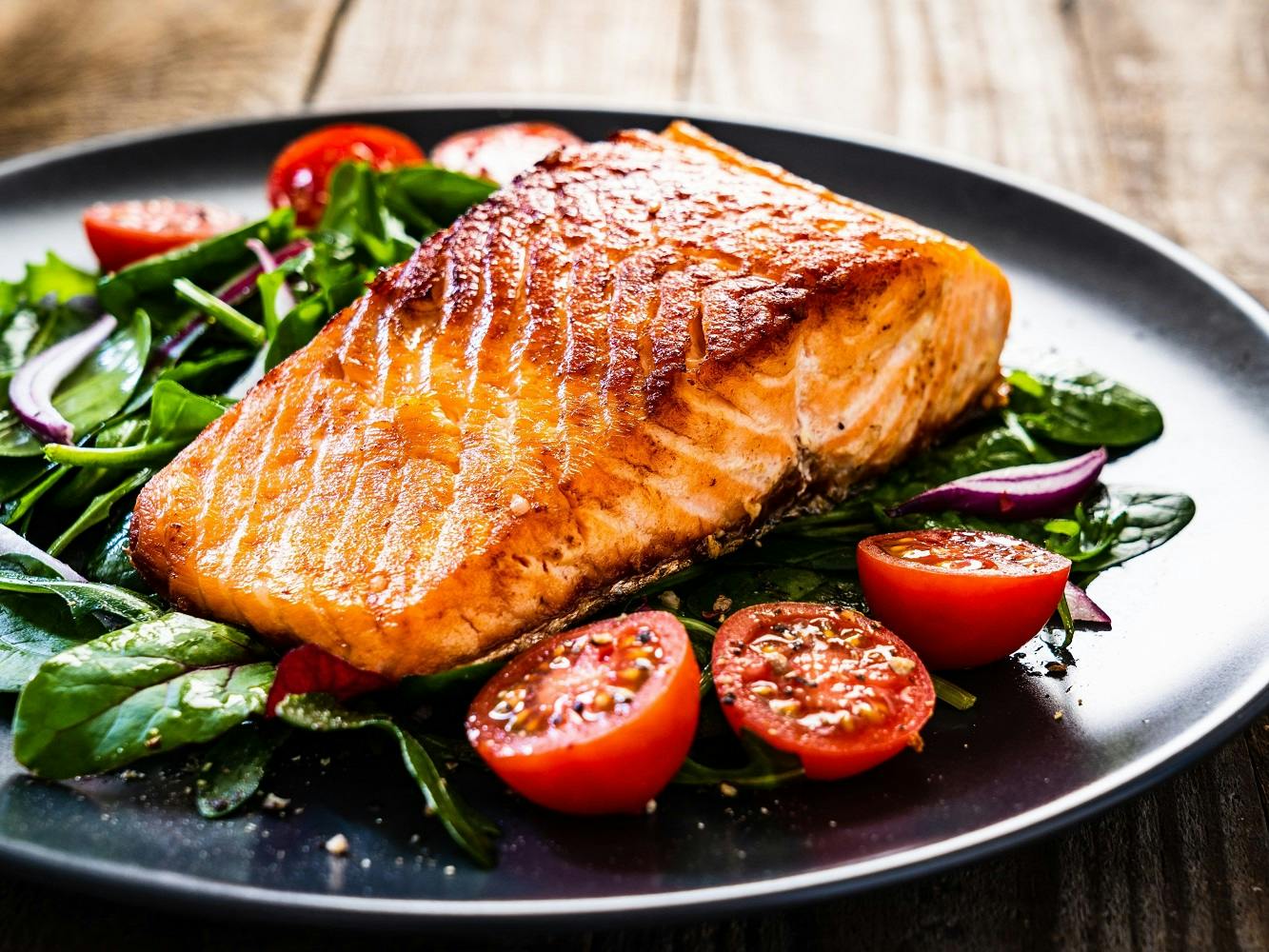
Fish is a great source of protein, vitamins, and often omega-3s. But some are better than others. Here are the best fish to eat.
Give a man a fish. Teach a man to fish. However you do it, just make sure you’re getting some fish.
The Dietary Guidelines of America suggests adults eat two to three servings of fish per week. But according to Harvard School of Public Health, many Americans are falling short of that recommendation, with only one-third of American households eating fish at least once a week, and nearly half of the population eating little to no fish at all.
"Healthy fats are important for brain health because they're important for the cardiovascular system, which then plays a role in brain functioning,” Sharon Stoll, DO, a neurologist and assistant professor of neurology at Yale School of Medicine, told Livestrong.com. “Nutrients like omega-3 fatty acids may help protect your brain over time and could slow down the progression of brain diseases.”
But when it comes to your health, not all fish are created equal. If you’re looking to add more seafood to your diet, here are some tips on the best fish you can eat.
The healthiest fish in the sea
The healthiest fish are rich in protein and omega-3 fatty acids. These fats help the body reduce inflammation, regulate hormones, and relax artery walls. A diet rich in omega-3s has been linked to reduced risk of heart attack, stroke, and various autoimmune diseases. The best fish also tend to carry low levels of mercury.
So, let’s look at a few fish that check all these boxes.
Wild-caught salmon
Chock-full of protein and omega-3 fatty acids, salmon takes the top spot on the list of healthy fish. Wild-caught tends to be more nutritious than farm-raised, and it usually contains fewer antibiotics, chemicals, and pollutants, too.
Atlantic mackerel
This oily fish has lots of omega-3s, Vitamin B-12, Vitamin D, iron, and protein. Atlantic mackerel is also a fast-growing fish, so it’s a great sustainable option, as well.
Sardines
Those tiny fish are big on nutrients. Sardines are not only a good source of omega-3s but also Vitamin B12, iron, selenium, and calcium.
Cod
High in protein and low in fat, cod is considered one of the most nutritious white fish. It also contains phosphorus and selenium.
Trout
This freshwater fish is an excellent source of omega-3s, niacin, protein, and Vitamin B12.
All these fish are tasty, nutritious options to add to any healthy diet.
Important to know
While seafood is generally a healthy option, there are some things to keep in mind while shopping at the fish counter.
Seafood vs. fish vs. shellfish
Sometimes these words are used interchangeably, but they do indeed mean different things.
“Seafood” is a general term for any sea life which is then eaten by humans. So that means not only fish but shellfish, cephalopods, and sea plants like seaweed.
A lot of times, “fish” is used as a blanket term to describe all seafood, including shellfish. But fish and shellfish can have very different nutritional values, so it’s something to be aware of. Fish, of course, are the animals in bodies of water that breathe through gills and have no limbs.
“Shellfish” refers to aquatic animals with an exoskeleton, including mollusks, like mussels and clams, crustaceans, like lobsters and crayfish, and echinoderms, like starfish. (Fun fact: Because starfish aren’t, in fact, fish, marine biologists prefer the name “sea stars.”)
Both fish and shellfish are a good source of protein and low in calories and fat. But it’s important to note that some shellfish, like shrimp and lobster, are high in cholesterol.
Also of note, shellfish is one of the most common food allergies in the United States. Some people might be allergic to specific shellfish, while others might be allergic to all of them.
Shellfish also can carry foodborne pathogens, which can lead to food poisoning. So, when you are preparing and eating shellfish, be sure that it is fresh and that it has been chilled and stored properly.
Mercury
Mercury found in fish is caused by methylmercury, an organic form of the metal that is absorbed into the tissue of the fish.
Most fish contain at least a little mercury, but some have more than others. King Mackerel, shark, swordfish, orange roughy, and big-eye tuna have some of the highest levels of mercury. Salmon, cod, and sardines have some of the lowest levels.
While most people will not eat enough fish to accumulate high levels of mercury in their bodies, it’s something to keep in the back of your mind.
High levels of mercury exposure can damage your central nervous system, causing disturbed vision, mobility problems, slurred speech, and more. Small children, pregnant women, and breastfeeding mothers are the most at risk of the adverse health effects of mercury.
Still, despite fish coming with some risk of mercury exposure, experts say the benefits of eating at least 8 ounces of fish per week outweigh the risks of mercury exposure. Just don’t eat high-mercury fish every day!
Do you have Medicare questions? We have answers.
When it comes to Medicare, one plan definitely does not fit all. At ClearMatch, it’s our mission to match you to the policy that best serves your unique needs. It’s all we do, and we do it better than anyone. Check out our extensive library of articles for answers to your Medicare questions. Or, compare plans in your area to get started finding the policy that’s right for you.
Additional resources
Harvard: Fish: Friend or Foe?
Live Strong: Why You Should Eat More Fatty Fish



